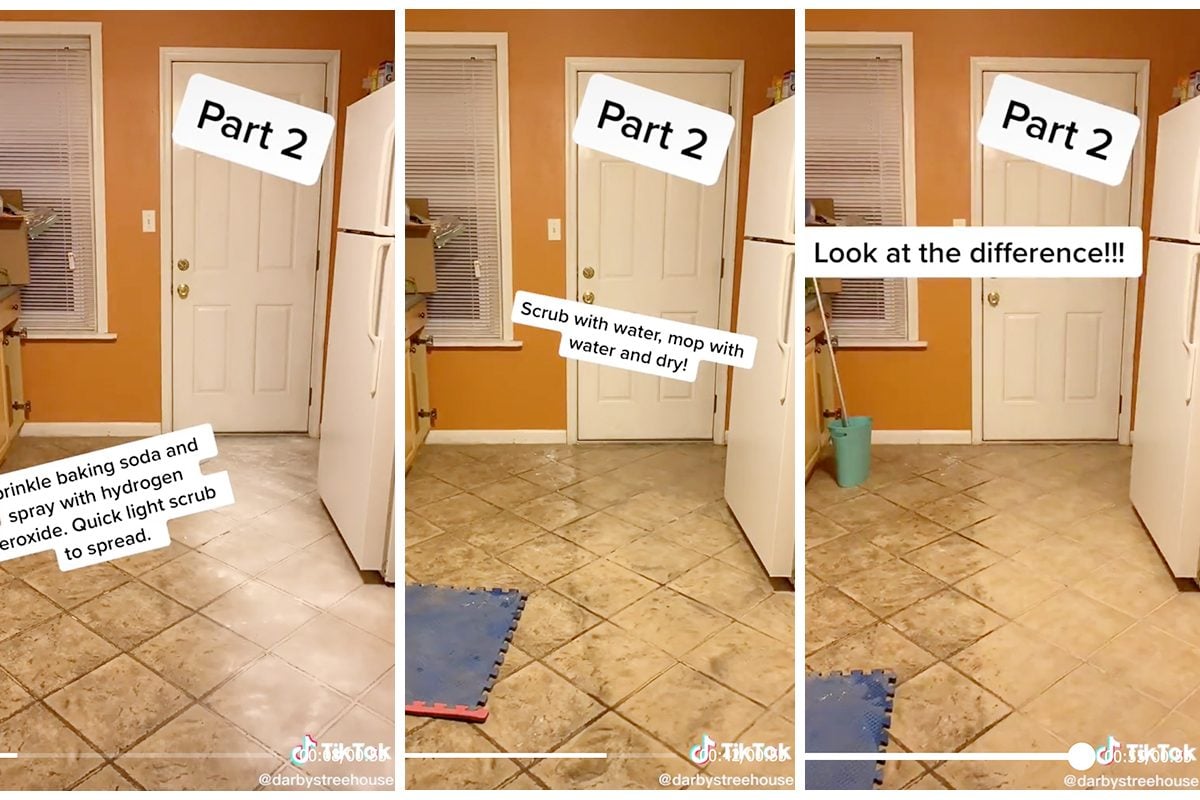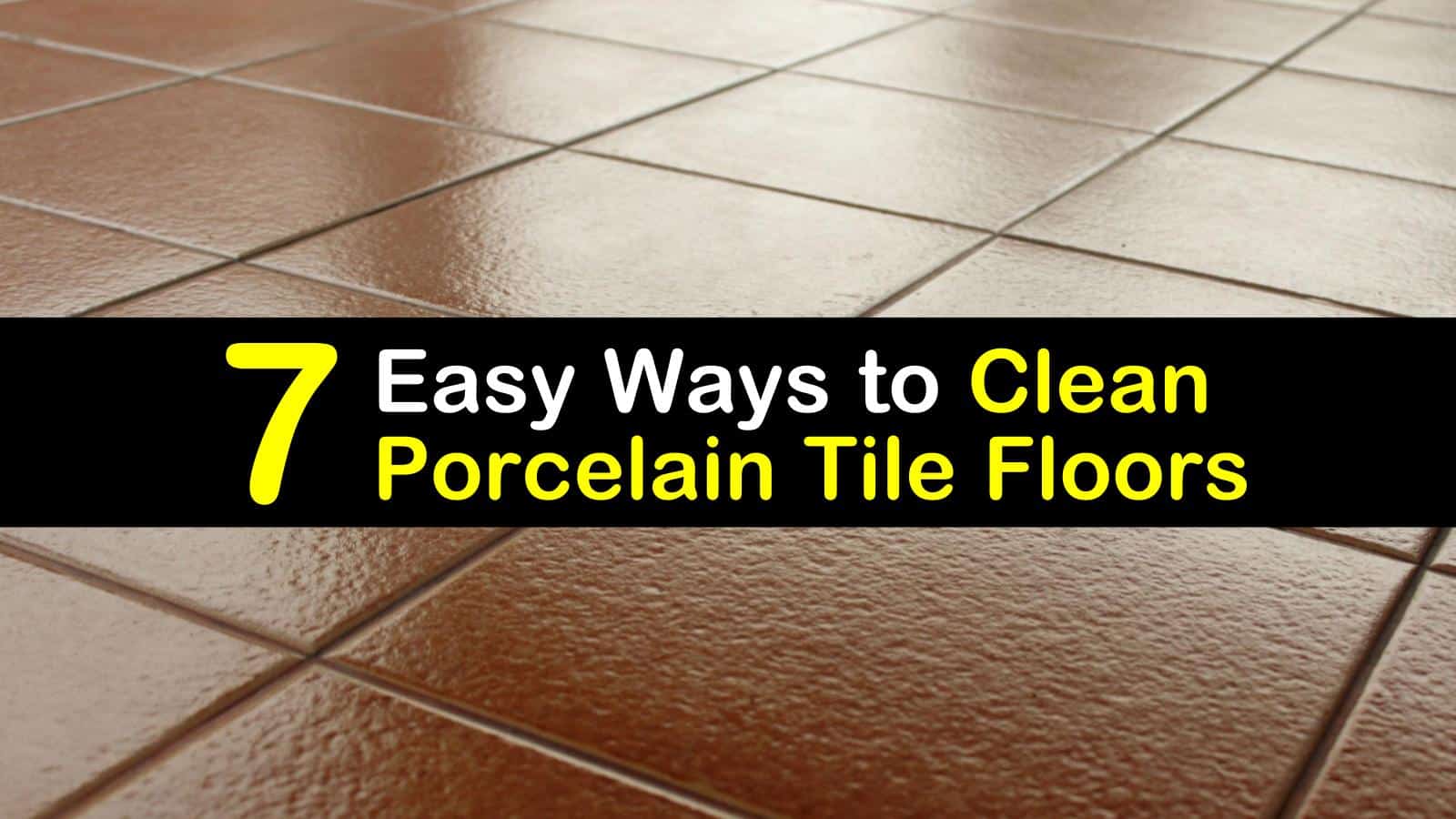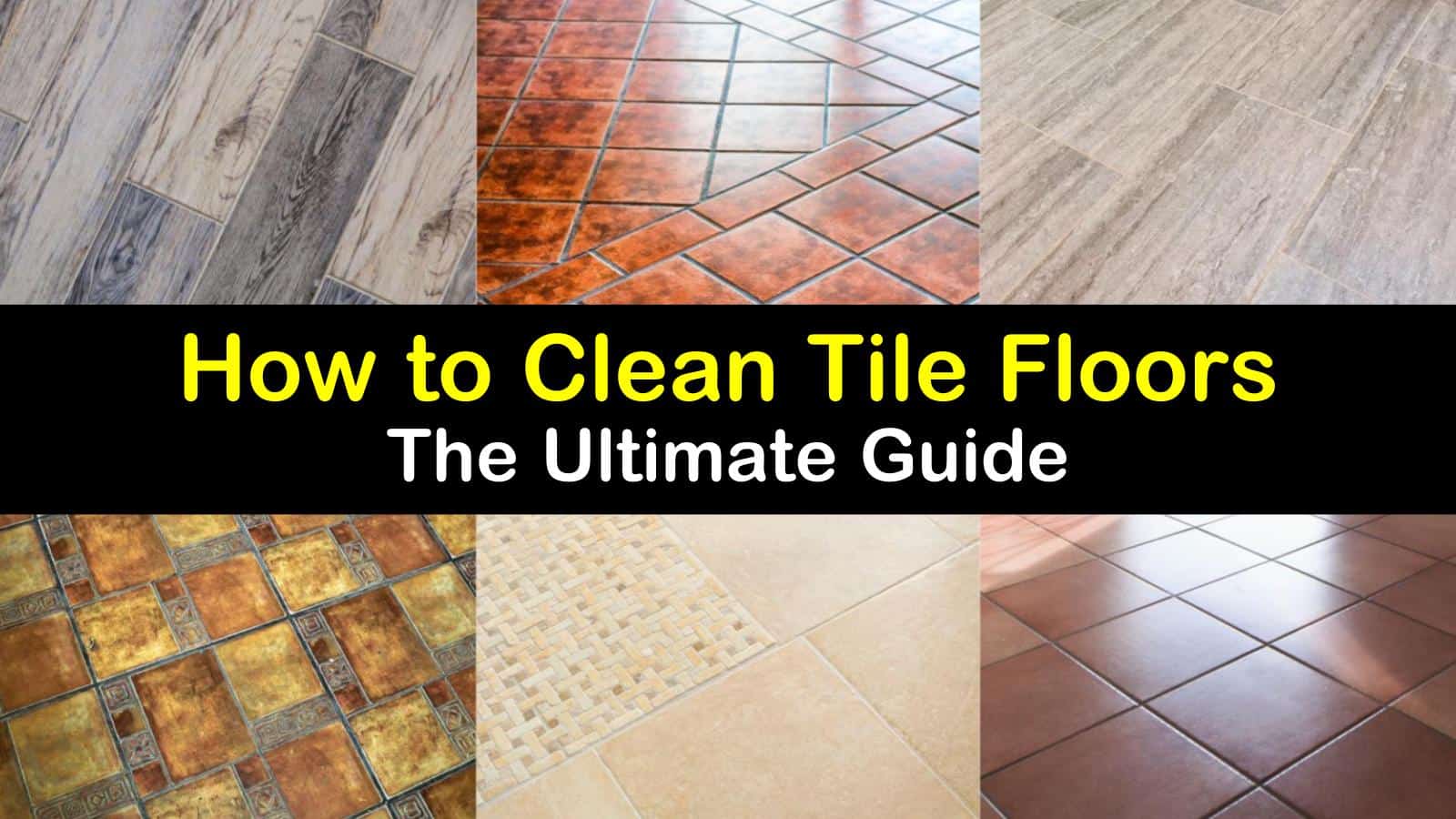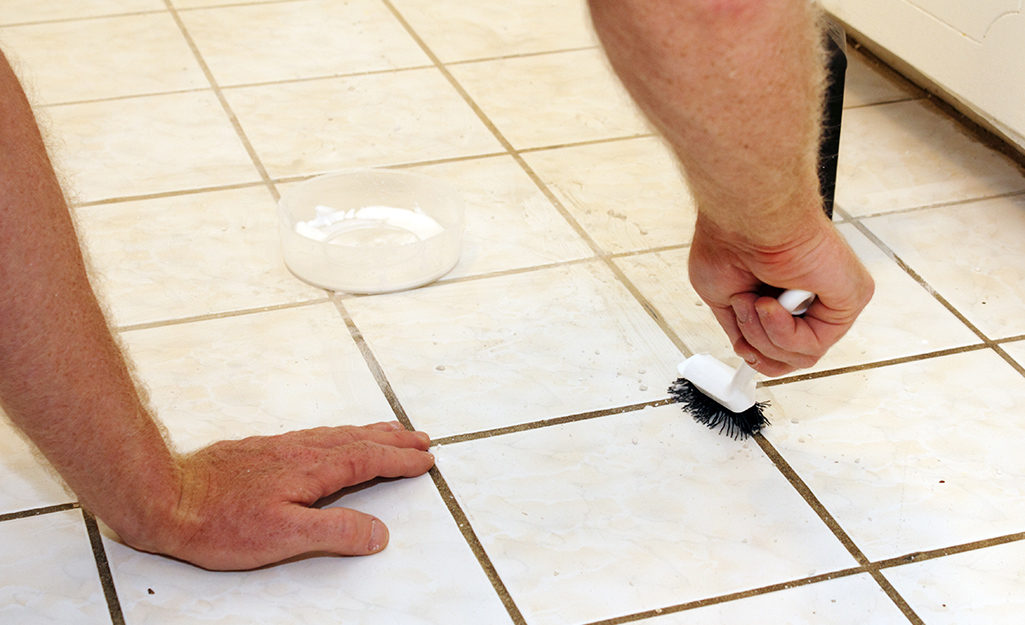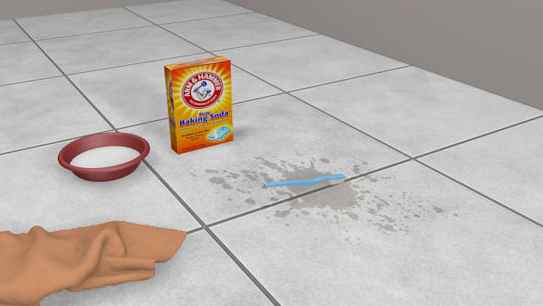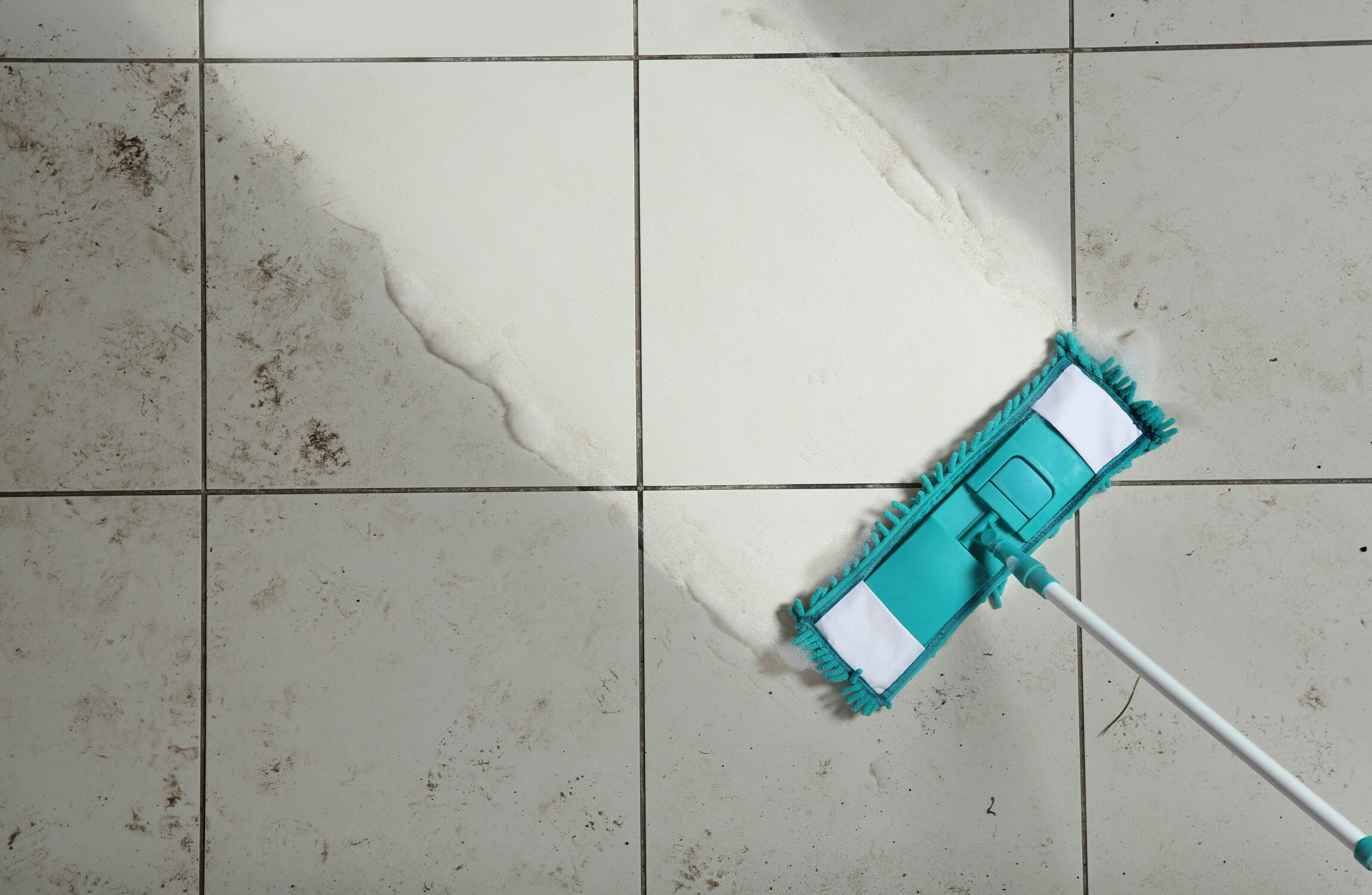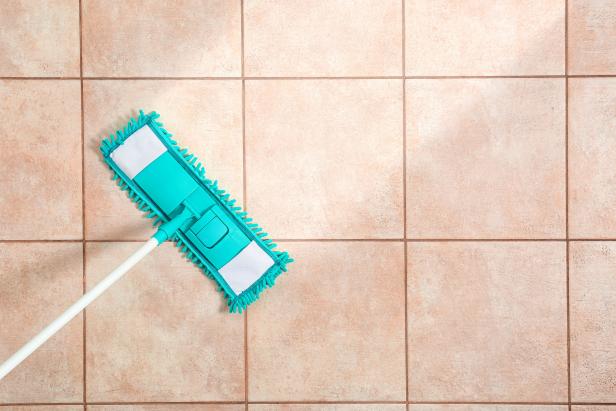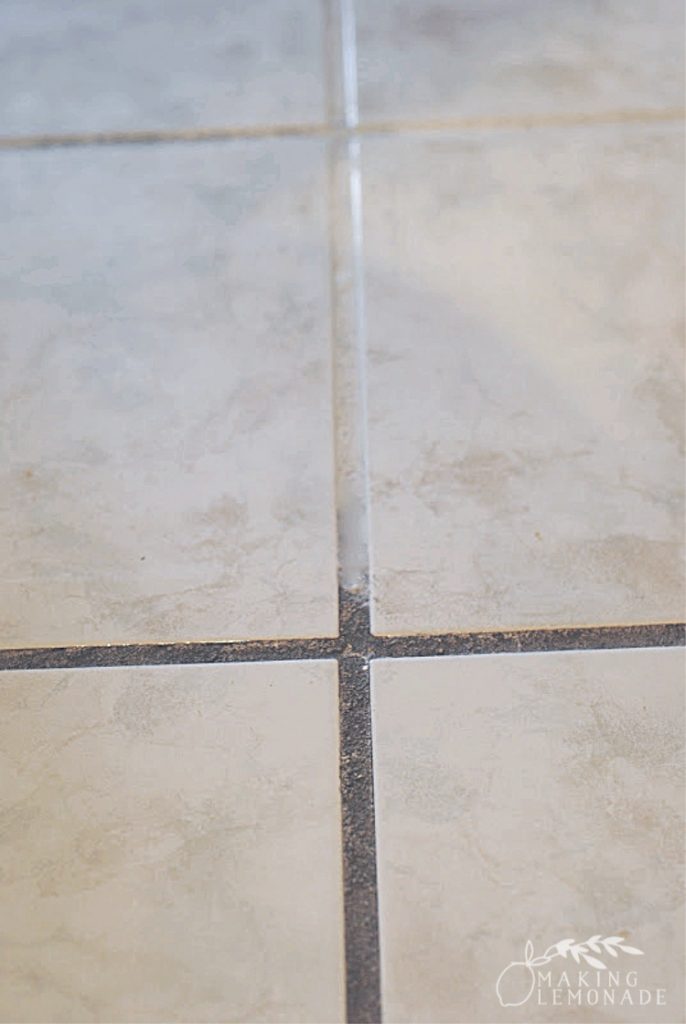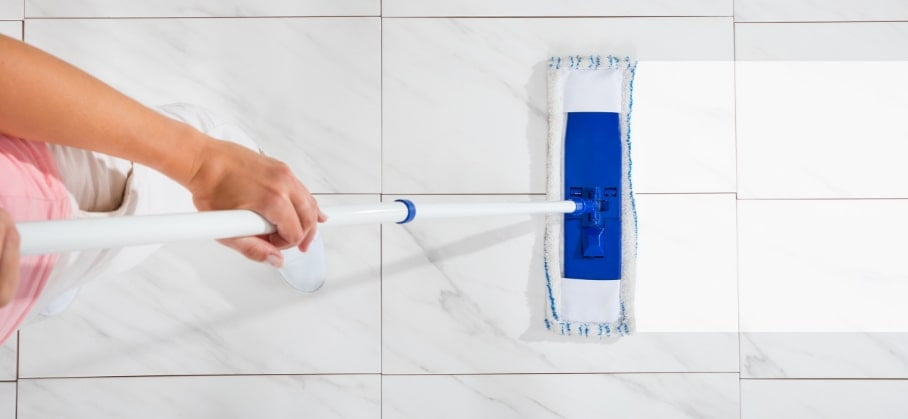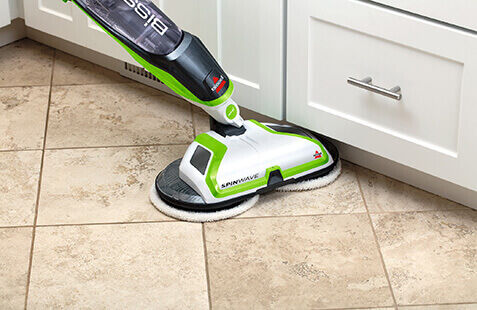Essential Supplies for Cleaning New Tile Floors
Cleaning new tile floors requires the right tools and supplies to ensure a thorough and effective cleaning process without damaging the surface. With the proper equipment on hand, you can keep your tile floors looking fresh and pristine for years to come. Here are the essential supplies you’ll need for cleaning new tile floors:
- Microfiber Mop: A microfiber mop is ideal for cleaning tile floors because it effectively traps dirt, dust, and debris without scratching or damaging the surface. Choose a mop with a swivel head and adjustable handle for easy maneuverability and comfortable use.
- Mild Detergent or Tile Cleaner: Use a mild detergent or specially formulated tile cleaner to remove dirt, grease, and stains from your tile floors. Avoid harsh chemicals or abrasive cleaners, as these can damage the grout and dull the finish of the tiles.
- Grout Brush: A grout brush with stiff bristles is essential for cleaning the grout lines between tiles. Use the brush to scrub away dirt, grime, and mildew buildup, paying special attention to areas with heavy traffic or spills.
- Bucket: A bucket is necessary for mixing cleaning solutions and rinsing your mop or brush during the cleaning process. Choose a durable bucket with a comfortable handle and a capacity large enough to hold an ample amount of water and cleaning solution.
- Warm Water: Warm water is an effective and gentle cleaning agent for tile floors. Use warm water to dilute your cleaning solution and rinse away dirt and grime, leaving your floors clean and refreshed.
- Soft Cloths or Towels: Soft cloths or towels are useful for drying your tile floors after cleaning to prevent water spots and streaks. Choose lint-free cloths or microfiber towels for the best results.
- Protective Gloves: Protective gloves are recommended when handling cleaning solutions to protect your skin from irritation or allergic reactions. Choose gloves made from latex, vinyl, or nitrile for maximum protection and comfort.
- Vinegar: White vinegar is a natural and eco-friendly alternative to chemical cleaners for cleaning tile floors. Mix equal parts vinegar and water in a spray bottle for a gentle yet effective cleaning solution that won’t leave behind residue or harmful fumes.
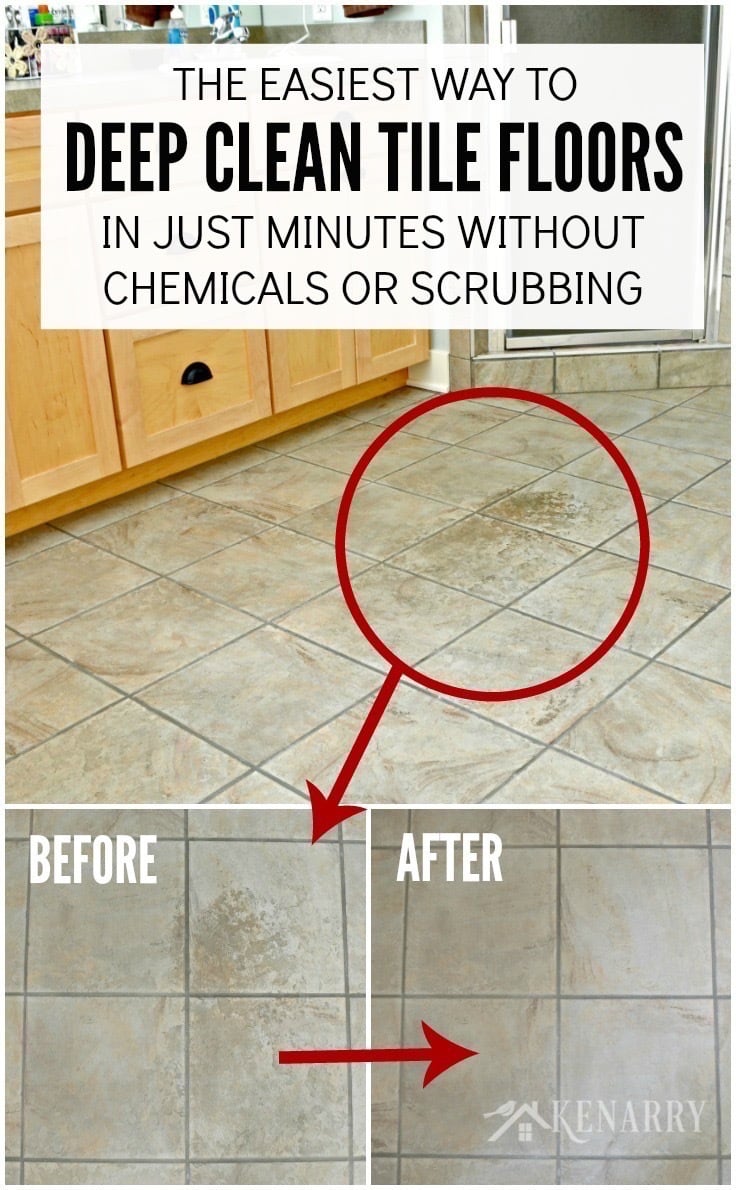
Step-by-Step Guide to Cleaning New Tile Floors
Cleaning new tile floors may seem like a daunting task, but with the right approach and techniques, you can keep your floors looking clean and fresh with minimal effort. Follow this step-by-step guide to effectively clean your new tile floors:
Sweep or Vacuum: Start by removing loose dirt, dust, and debris from the surface of the tile floors. Use a broom or vacuum cleaner with a soft brush attachment to sweep or vacuum the floors, paying special attention to corners, edges, and baseboards.
Mix Cleaning Solution: In a bucket, mix a mild detergent or specially formulated tile cleaner with warm water according to the manufacturer’s instructions. Avoid using harsh chemicals or abrasive cleaners, as these can damage the grout and dull the finish of the tiles.
Apply Cleaning Solution: Dip a microfiber mop into the cleaning solution and wring out any excess water. Begin mopping the tile floors, working in small sections, and overlapping each pass to ensure thorough coverage. Avoid saturating the floors with water, as excessive moisture can seep into the grout and cause damage over time.
Scrub Grout Lines: Use a grout brush or an old toothbrush to scrub the grout lines between tiles. Apply gentle pressure and use a back-and-forth motion to loosen dirt, grime, and mildew buildup. Rinse the brush frequently and change the water as needed to prevent spreading dirt from one area to another.
Rinse Floors: Once you’ve cleaned the entire floor surface, rinse the floors thoroughly with clean water to remove any remaining cleaning solution and residue. Use a clean mop or soft cloth dampened with water to wipe away dirt and soap scum, leaving your tile floors sparkling clean.
Dry Floors: Finally, use soft cloths or towels to dry the tile floors thoroughly and prevent water spots and streaks from forming. Open windows or use fans to improve air circulation and speed up the drying process if necessary.
Optional: Apply Sealant: If your tile floors are unsealed or have been recently installed, consider applying a tile sealant or grout sealer to protect the surface and prevent staining and moisture damage. Follow the manufacturer’s instructions carefully for best results.
Tips for Maintaining the Cleanliness of New Tile Floors
Once you’ve cleaned your new tile floors, it’s essential to maintain their cleanliness to ensure they stay looking fresh and pristine for as long as possible. With a few simple tips and tricks, you can keep your tile floors in top condition and prevent dirt, grime, and stains from accumulating. Here are some tips for maintaining the cleanliness of new tile floors:
Clean Spills Promptly: Accidents happen, but it’s essential to clean up spills and messes promptly to prevent stains and damage to your tile floors. Use a soft cloth or paper towel to blot up spills as soon as they occur, then clean the area with warm water and mild detergent to remove any remaining residue.
Sweep or Vacuum Regularly: Regular sweeping or vacuuming is essential for removing dirt, dust, and debris from the surface of your tile floors. Use a broom or vacuum cleaner with a soft brush attachment to sweep or vacuum the floors at least once a week, paying special attention to high-traffic areas and areas prone to spills.
Use Mats or Rugs: Place mats or rugs at entryways and high-traffic areas to trap dirt and prevent it from being tracked onto your tile floors. Choose mats or rugs with non-slip backing to prevent accidents, and shake them out or wash them regularly to remove trapped dirt and debris.
Avoid Abrasive Cleaners: Avoid using harsh chemicals or abrasive cleaners on your tile floors, as these can damage the grout and dull the finish of the tiles. Stick to mild detergents or specially formulated tile cleaners and avoid scrubbing too vigorously to prevent scratching or etching the surface.
Protect Floors from Furniture: Place felt pads or furniture glides under the legs of furniture to protect your tile floors from scratches and dents. Avoid dragging heavy furniture or appliances across the floor, as this can cause damage to the tiles and grout.
Regularly Inspect Grout: Periodically inspect the grout lines between tiles for signs of damage or deterioration. Look for cracks, chips, or areas where the grout has come loose, and repair any issues promptly to prevent water damage and maintain the integrity of your tile floors.
Use Area Rugs in Wet Areas: In areas such as bathrooms, kitchens, and laundry rooms where moisture is prevalent, consider using area rugs or bath mats to absorb water and prevent slipping accidents. Choose rugs or mats with a non-slip backing and wash them regularly to prevent mold and mildew buildup.
Natural and Eco-Friendly Cleaning Solutions for New Tile Floors
Cleaning new tile floors with natural and eco-friendly cleaning solutions is not only better for the environment but also safer for your family and pets. Many commercial cleaning products contain harsh chemicals and toxins that can be harmful to your health and the environment. Fortunately, several natural and eco-friendly alternatives are just as effective at cleaning tile floors without the negative side effects. Here are some natural and eco-friendly cleaning solutions for new tile floors:
White Vinegar: White vinegar is a natural and versatile cleaning agent that can effectively remove dirt, grease, and stains from tile floors. Mix equal parts white vinegar and water in a spray bottle and use it to clean and disinfect your tile floors. Vinegar’s acidic properties help break down dirt and grime without leaving behind residue or harmful fumes.
Baking Soda: Baking soda is another natural cleaning agent that can help remove stains and odors from tile floors. Sprinkle baking soda directly onto the surface of the tile floors, then spray with white vinegar and water solution. Allow the mixture to fizz and bubble for a few minutes, then scrub the floors with a soft brush or sponge to lift away dirt and grime.
Lemon Juice: Lemon juice is a natural disinfectant and deodorizer that can help freshen up tile floors and remove stubborn stains. Mix fresh lemon juice with water in a spray bottle and use it to clean and sanitize your tile floors. The citric acid in lemon juice helps dissolve dirt and grease while leaving behind a fresh, clean scent.
Essential Oils: Essential oils such as tea tree oil, lavender oil, and eucalyptus oil have natural antimicrobial and antibacterial properties that can help disinfect and deodorize tile floors. Add a few drops of your favorite essential oil to your cleaning solution for an extra boost of cleaning power and a pleasant aroma.
Castile Soap: Castile soap is a natural, plant-based soap that can be used to clean a variety of surfaces, including tile floors. Mix a small amount of castile soap with warm water in a bucket and use it to mop your tile floors. Castile soap is gentle yet effective at removing dirt and grime without leaving behind residue or harmful chemicals.
Hydrogen Peroxide: Hydrogen peroxide is a natural disinfectant that can help kill germs and bacteria on tile floors. Mix equal parts hydrogen peroxide and water in a spray bottle and use it to spot clean areas with heavy stains or bacterial growth. Allow the solution to sit for a few minutes, then wipe away with a clean cloth or sponge.
Homemade All-Purpose Cleaner: Combine equal parts white vinegar and water with a few drops of dish soap and your favorite essential oils to create a homemade all-purpose cleaner for tile floors. Use this solution to mop your floors regularly for a natural and effective cleaning solution that’s safe for your family and the environment.
Common Mistakes to Avoid When Cleaning New Tile Floors
Cleaning new tile floors may seem straightforward, but there are several common mistakes that homeowners often make that can damage the surface and diminish the appearance of the tiles. By avoiding these mistakes and following proper cleaning techniques, you can keep your tile floors looking fresh and beautiful for years to come. Here are some common mistakes to avoid when cleaning new tile floors:
Using Harsh Chemicals: One of the most common mistakes homeowners make when cleaning tile floors is using harsh chemicals or abrasive cleaners that can damage the surface of the tiles and grout. Avoid using products containing bleach, ammonia, or acidic substances, as these can cause discoloration, etching, or deterioration of the grout.
Overusing Water: Another common mistake is overusing water when cleaning tile floors, which can seep into the grout and cause damage over time. Use a damp mop or cloth to clean the floors instead of saturating them with water, and be sure to dry them thoroughly afterward to prevent water spots and streaks.
Scrubbing Too Vigorously: Scrubbing tile floors too vigorously can scratch the surface and damage the finish of the tiles. Avoid using abrasive brushes or scouring pads, and use gentle pressure when scrubbing to avoid causing damage. If necessary, use a soft brush or sponge to loosen dirt and grime without scratching the surface.
Neglecting Grout Lines: Neglecting to clean and maintain the grout lines between tiles is another common mistake that can lead to staining, mildew buildup, and deterioration over time. Be sure to scrub the grout lines regularly with a grout brush or old toothbrush to remove dirt, grime, and mildew, and consider sealing the grout to protect it from moisture and stains.
Skipping Regular Maintenance: Regular maintenance is essential for keeping tile floors looking fresh and beautiful for years to come. Skipping regular sweeping, vacuuming, and mopping can allow dirt, dust, and debris to accumulate, making it more challenging to clean the floors later on. Establish a regular cleaning routine and stick to it to maintain the cleanliness and appearance of your tile floors.
Using Improper Cleaning Tools: Using improper cleaning tools, such as abrasive brushes or harsh cleaning pads, can scratch the surface of the tiles and damage the grout. Use soft cloths, microfiber mops, and gentle cleaning solutions to clean your tile floors without causing damage.
Not Drying Floors Properly: Neglecting to dry tile floors properly after cleaning can lead to water spots, streaks, and moisture damage. Use soft cloths or towels to dry the floors thoroughly, and ensure adequate ventilation to help speed up the drying process.
How to clean ceramic tile floors with vinegar – Best Ceramics Review
No streaks, no stickiness, no stains: Hereu0027s how to properly mop a
How to Clean Ceramic Tile Floors
How to Clean a Ceramic Tile Floor and Grout Limpeza de pisos
The Best Way to Clean Tile and Grout! – Tile Maintenance Tips Episode 1
Tricks for Cleaning with Vinegar – Making Lemonade
How to Clean Tiled Floors with Vinegar Cleaning Guides by Fantastic!
Best Way to Clean Tile Floors BISSELL® Tips
How To Clean Dirty White Tiles to Make Pure White Tiles At Home
Related Posts:
